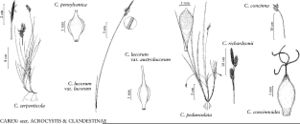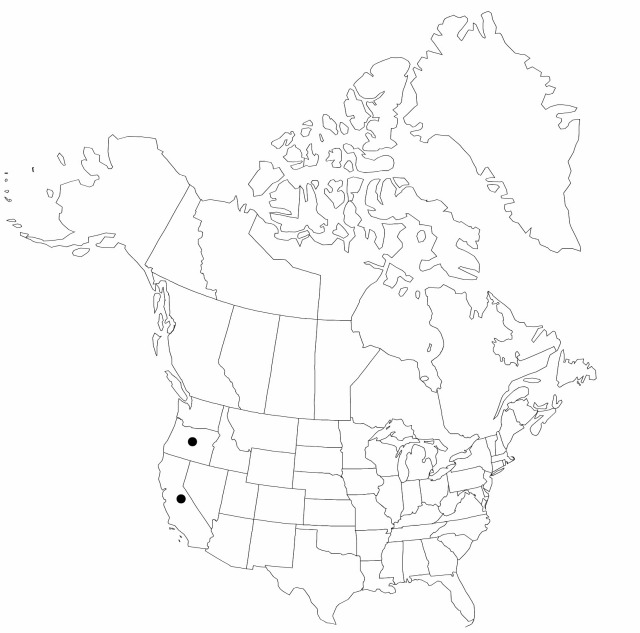Carex serpenticola
Madroño 45: 261, figs. 1, 2, 3S. 1998.
Plants loosely cespitose or with solitary stems; rhizomes horizontal, purple to black, 25–75 (–100) mm, slender. Culms 8–38 cm; bases (remnants of old leaves) weakly to strongly fibrous. Leaf-blades green, 1.5–3.5 (–5) mm wide, herbaceous, smooth to scabrous abaxially, smooth to scabrous adaxially. Inflorescences usually with either staminate or pistillate spikes, occasionally with both; peduncles of staminate spikes short; proximal nonbasal bracts leaflike, dark purple to black at base, shorter than inflorescences. Spikes: proximal pistillate spikes 1–4 (basal spikes 0–1); cauline spikes overlapping or somewhat separted, with 4–9 perigynia; staminate spikes 13–24 × (1.4–) 2–4.1 mm. Scales: pistillate scales dark purple to black, with narrow white margins, lanceolate, 3.8–4.6 × 1.3–1.8 mm, apex acuminate; staminate scales oblanceolate, 4.6–5.6 × 1.1–1.6 mm, apex acute; proximal staminate scales with narrow white margins 0.1–0.2 mm wide. Anthers 2.1–4 mm. Perigynia green, occasionally dark purple in age, veinless or 5-veined near base, obovoid, 3.1–3.6 × 1.5–1.8 mm; beak slightly bent, dark purple, 0.5–1 mm, weakly ciliate-serrulate, apical teeth 0.2 mm. Stigmas 3. Achenes pale to medium brown, globose, round in cross-section, 1.9–2.2 × 1.4–1.8 mm.
Phenology: Fruiting mid Apr–mid Jun.
Habitat: Open or partly shaded, vernally moist to wet meadows, riparian woodlands, savannas, successional scrublands, wetland margins, serpentine soils derived from ultramafic bedrock
Elevation: 60–1200 m
Discussion
Selected References
None.
Lower Taxa
"shortened" is not a number.

